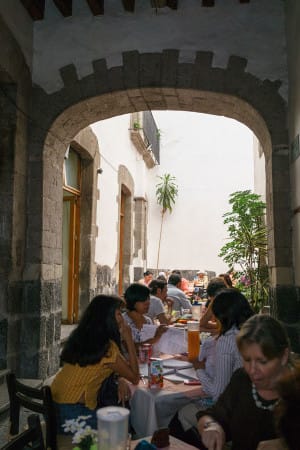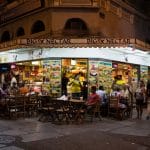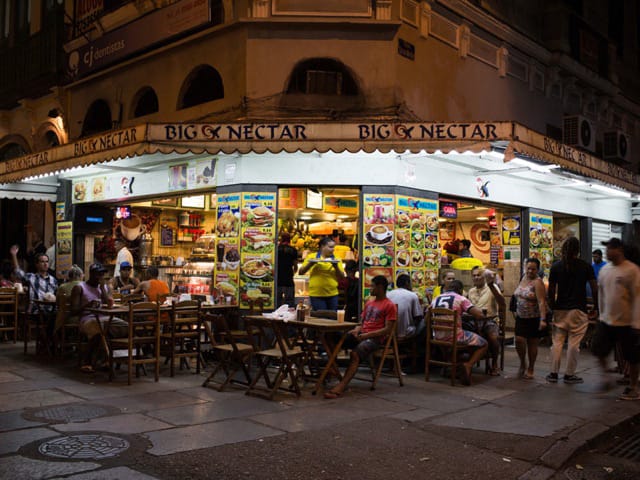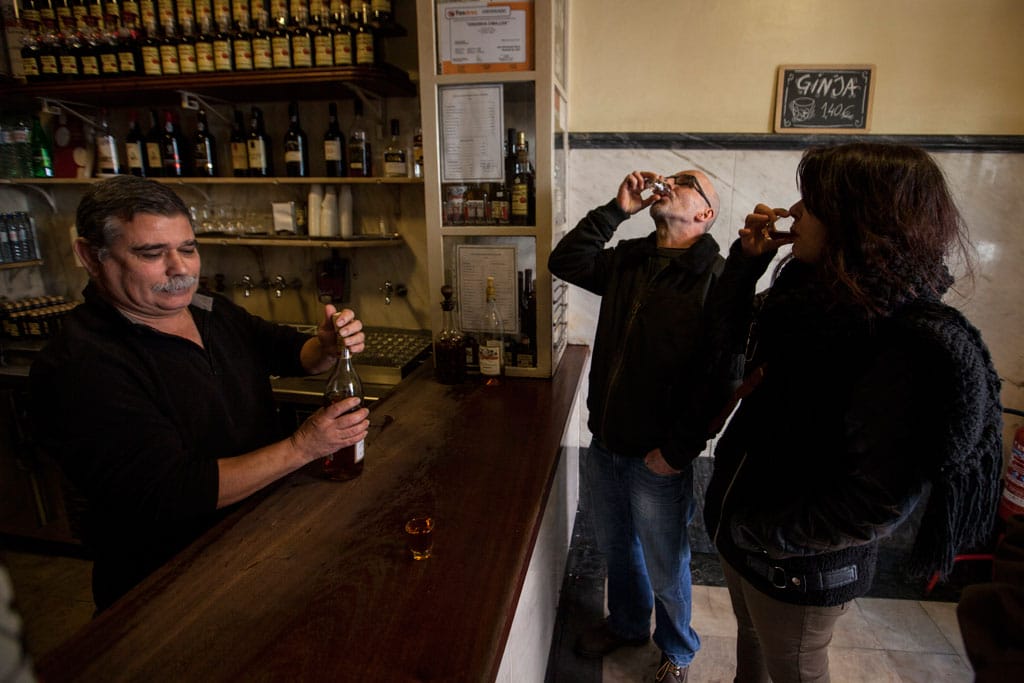Update: This spot is sadly no longer open.
True to its name, Mexico City’s Centro Histórico is full of history everywhere you look. Walking its cobblestone streets guarded by historic buildings, some 500 years old, is always a great learning experience for us. On one of our recent walks through this amazing part of the city, we stumbled upon one building that caught our attention. First of all, there was a sign at the entrance that said that José Martí, Cuban poet, writer, philosopher and revolutionary leader, lived in the building at the end of the 19th century.
 The building, like many others in the city, was built in part with tezontle, a light volcanic rock that is iconic in downtown Mexico City for its rusty red color. Currently known as Casa de Tlaxcala, the building hosts the offices of the delegation that represents the state of Tlaxcala at the federal level. Known for its pulque, rugged and mountainous Tlaxcala is located a few hundred miles east of Mexico City, and much of the pulque sold in D.F. comes from that state. Tlaxcala and Puebla, its neighbor to the south, share a lot of the same ingredients and foods – in fact, there is some dispute as to which state is the origin of some dishes, including mole and chiles en nogada.
The building, like many others in the city, was built in part with tezontle, a light volcanic rock that is iconic in downtown Mexico City for its rusty red color. Currently known as Casa de Tlaxcala, the building hosts the offices of the delegation that represents the state of Tlaxcala at the federal level. Known for its pulque, rugged and mountainous Tlaxcala is located a few hundred miles east of Mexico City, and much of the pulque sold in D.F. comes from that state. Tlaxcala and Puebla, its neighbor to the south, share a lot of the same ingredients and foods – in fact, there is some dispute as to which state is the origin of some dishes, including mole and chiles en nogada.
Most intriguing about Casa de Tlaxcala was the restaurant San Francisco, located on the ground floor, which uses ingredients and recipes from that state to create some tantalizing dishes. The menu does offer some options that would be familiar to chilangos (Mexico City locals), such as mole poblano, mole de olla and tampiqueña (a beef cut served with enchiladas). Other dishes need some explaining, such as Pipián Tizatlán (a kind of mole made with seeds), Pollo Tocatlán (chicken legs cooked in tomato sauce and cactus paddles) and Puntas de Filete Ocotlán (fillet tips served with a smoky chipotle sauce).
We started our dinner with a sopa tlaxcalteca, Tlaxcala-style soup made with blended beans, tomato and peppers and served with tortilla strips, chicharrón (pork rind) and panela cheese – a delightful combination of flavors and textures. We also tried the cecina Zahuapán, a thin fillet served with a tomatillo sauce, nopales and cheese au gratin, which was rich and satisfying. Our favorite dish and one that we had heard great reviews of before, however, was the Chile Traspatio. To create it, a poblano pepper is roasted, cleaned and then stuffed with three different cheeses: panela, manchego and doble crema. The pepper is wrapped in puff pastry and baked until golden. It is then served on top of a tomato sauce and brought to the table steaming hot. What’s not to like?

The name of this dish comes from the fact that San Francisco is located on the patio of Casa de Tlaxcala and it was created here. Not all the dishes originate from Tlaxcala, as we later learned from chef Marta Sanchez (though many do get their names from geographical features and municipalities there), but many are unique to the restaurant – which makes it all the more alluring to return again and again to eat our way through the entire menu.
 May 28, 2013 Rio: State of the Stomach
May 28, 2013 Rio: State of the Stomach
Editor’s note: As of this week, Rio de Janeiro joins Culinary Backstreets as our sixth […] Posted in Rio February 20, 2018 Comixcal
February 20, 2018 Comixcal
“There are two Oaxacan foods – what is served for tourists, and what people really eat,” […] Posted in Mexico City June 24, 2016 Behind Bars
June 24, 2016 Behind Bars
Abílio Coelho is a generous man, offering a smile to every customer while serving each […] Posted in Lisbon
Published on May 12, 2015
Related stories
May 28, 2013
RioEditor’s note: As of this week, Rio de Janeiro joins Culinary Backstreets as our sixth city. We’re thrilled to have expanded to four continents, and are looking forward to sharing with readers our explorations of this exciting city's dynamic food scene. Like many things in Brazil's beachside, party-hard Carnival city of Rio de Janeiro, gastronomy…
February 20, 2018
Mexico City“There are two Oaxacan foods – what is served for tourists, and what people really eat,” says Marahí López, the chef at Comixcal, an Oaxacan restaurant in Mexico City’s Santa Maria La Ribera neighborhood. “There is a way that Oaxacan food is sold that is totally detached from the way we eat it in Oaxaca.” López…
Meet the man Behind the Bar on our Crossroads Walk!
June 24, 2016
LisbonAbílio Coelho is a generous man, offering a smile to every customer while serving each of them the most traditional drink in Lisbon: ginjinha. He has spent 44 of his 63 years behind a counter serving the libation. Ginja Sem Rival, the bar he serves it in, like the best places, is a hole-in-the-wall, and…



















































































